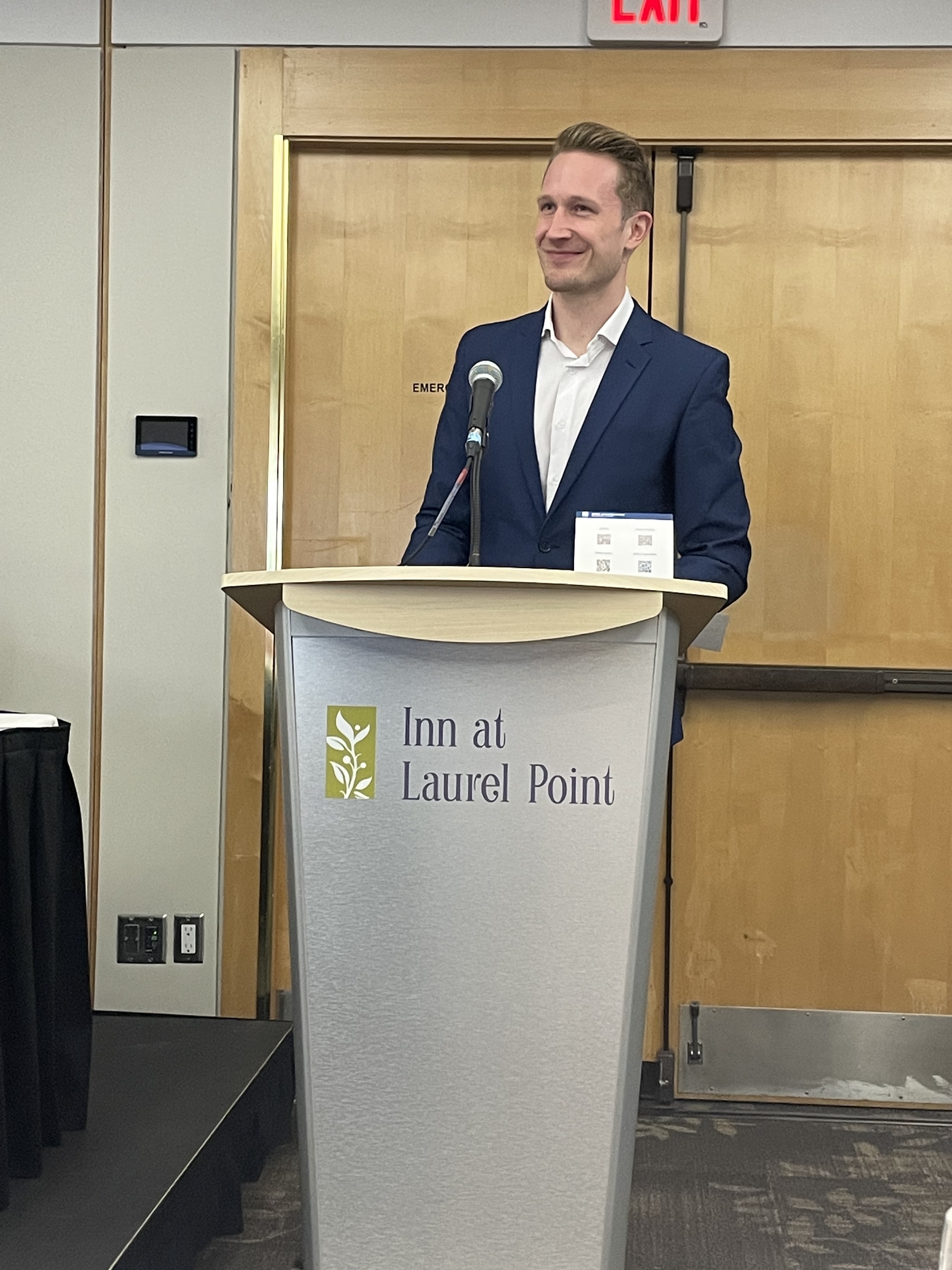Session 8: Waypoint 2050 Report: Achieving Net Zero By 2050
Air Transport Action Group (ATAG) representative Haldane Dodd joined the conference via a video link from Geneva. One area the presentation focussed on was the rapid adoption of Sustainable Aviation Fuel (SAF) by 2030 and the potential for a dramatic reduction in harmful carbon emissions. Illustrated above is one of the presentation slides that illustrates the various source material that goes into SAF. Production of SAF will provide millions of jobs in thousands of locations. Industry partners were urged to support outreach efforts to garner support so that SAF can support ongoing industry growth.

Session 9: RPAS (Unmanned Systems/Drones)
JR Hammond, Executive Director, Canadian Advanced Air Mobility Consortium (CAAM), spoke passionately about the present state of the drone industry and its potential.
InDro Robotics of Salt Spring Island showed a video demonstrating how drone technology is providing isolated coastal communities with timely product deliveries, such as prescription medicines. InDro’s CEO called for a simpler approval process for unmanned flight plans.
Nav Canada briefed the delegates on how they are incorporating unmanned aircraft into the national airspace system.

Session 10: eVTOL: A Soon-To-Be Reality
After giving an overview of Helijet’s history, building it into North America’s largest helicopter airline, founder and CEO Danny Sitnam is looking forward to electrically powered vertical takeoff and landing (eVTOL) aircraft. And not only for commercial passenger operations. As an example, origin-to-destination travel times (i.e., accident site to hospital) for long distance medevac operations in British Columbia, which is a big part of Helijet’s operations, can be reduced from six hours to less than two hours. Danny sees eVTOLs playing an essential role in Helijet’s future.

Session 11: Beyond COVID – Cleaner, Greener, Leaner, Keener
While reinforcing the messaging around the need for airports to become cleaner and greener, airports consultant Mike Brown of greatairports.ca also addressed what the future holds for airport economics by using data analysis to explain how traditional airport revenue streams have been disrupted by COVID and increasing concerns about climate change. Mike discussed how cargo shipping is playing a bigger and growing role in traditional passenger-focussed airport and warned against complacency that the industry will come back in the same form as before. He also advocated for airport workers to be paid a living wage.

Session 12: Aviation, Airports, Aerospace and The National Environmental Movement
This panel comprised the leaders of major Ottawa-based aviation industry associations. Canadian Business Aviation Association CEO Anthony Norejko focused on the vital role that small and rural airports play in support of the economy, and his organization’s efforts at lobbying government on issues such as the luxury tax proposed on new aircraft.
COPA’s aviation operations director Jim Ferrier addressed the issue of leaded aviation fuel (100LL Avgas) that is used in virtually all piston-powered aircraft, pointing out that in the U.S., the single major source of lead in the environment is aircraft using 100LL. There are efforts in the U.S. and Europe to find solutions. In Canada, the National Research Council is also studying the issue.
Helicopter Association of Canada president Trevor Mitchell told the delegates that a severe pilot shortage, resulting in parked aircraft, and low tariffs prevent his industry from replacing the fleet with new, more efficient equipment or even to word towards the adoption of SAF.

Session 13: Importance of Sustainable Aviation to British Columbia
Bowinn Ma, B.C.’s minister of state for infrastructure, stood in for Rob Fleming, the minister of transportation and infrastructure. She started off by recognizing the vital role that aviation played in the catastrophic floods in the fall of 2021. The minister continued by citing the importance of investing in airport infrastructure throughout the province. She informed the delegates that the ministry has launched a socio-economic study that will guide where and when infrastructure investment is made.

Session 14: Building A Common Approach Across the Industry
CBAA CEO Anthony Norejko led the session which solicited feedback on conference takeaways by means of interactive website. Delegates took their phones or other devices to provide input and then allowed others to vote on them. The web session was recorded and will allow the conference organizers to tabulate the response which will then allow for a more formal summary.


The Team That Put It All Together
The 2022 Conference was directed by BCAC Executive Director Dave Frank, produced by YYJ Operations Manager Lars Olsson and YYJ Administrative Operations Officer Sarah Venn with an agenda created by Conference Committee member David Nowzek that attracted speakers not only from British Columbia, but from across the Canada and as far away as Europe. The entire conference, the preeminent aviation conference in Canada, ran flawlessly from start to finish.

|